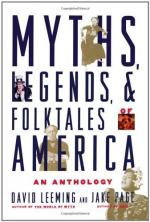|
This section contains 6,490 words (approx. 22 pages at 300 words per page) |

|
SOURCE: "Folk Historical Sense in Two Native American Authors," in MELUS: Society for the Study of the Multi-Ethnic Literature of the United States, Vol. 12, No. 1, Spring, 1985, pp. 65-78.
In the following essay, Clements compares the uses of folk history in works by N. Scott Momaday and Leslie Marmon Silko.
Most literary artists who are sympathetic to folklore view oral literature and traditional behavior as material useful for incorporation into their poetry, fiction, or drama. Writers have effected such incorporation in several ways and have put folklore to a number of literary uses: as local color embellishment, as source for characterization, as structuring device for plot, and as vehicle for theme among other possibilities.1 Yet no matter how they exploit folklore in their work, most writers, at least in the mainstreams of Western literary tradition, seem to view the texts and processes of folk culture as distinct from literary...
|
This section contains 6,490 words (approx. 22 pages at 300 words per page) |

|


